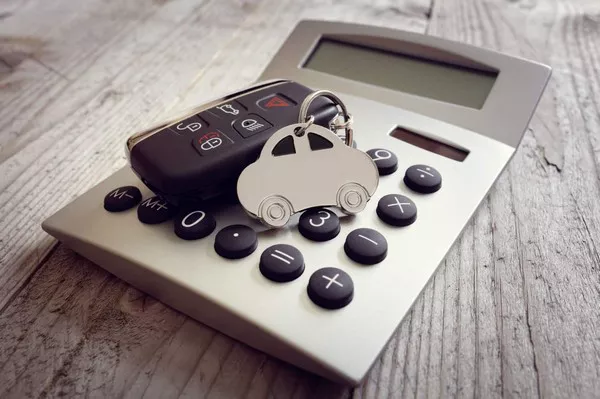In the process of filing a car insurance claim, the role of the claims adjuster is crucial. They are responsible for investigating, evaluating, and handling insurance claims, ensuring each case is resolved fairly and efficiently. Understanding the duties of a car insurance claims adjuster can help policyholders navigate the claims process more effectively and set realistic expectations.
Primary Responsibilities
A car insurance claims adjuster has several primary responsibilities. These duties ensure claims are handled fairly and efficiently.
1. Investigating Claims
One of the main duties is to investigate claims. This involves examining the details of each claim thoroughly.
Collecting Evidence
Claims adjusters collect evidence related to the claim. This can include photos of the accident scene, police reports, and witness statements.
Assessing Damage
They assess the damage to the vehicles involved. This helps determine the cost of repairs or replacement.
2. Evaluating Insurance Policies
Claims adjusters evaluate insurance policies. They determine the coverage limits and exclusions that apply to each claim.
Understanding Policy Terms
Adjusters must understand the terms and conditions of the policies they handle. This ensures accurate and fair assessment of claims.
Comparing Claims to Coverage
They compare the details of the claim to the coverage provided by the policy. This helps determine whether the claim is valid and to what extent it should be covered.
3. Communicating with Claimants
Effective communication is crucial. Adjusters must keep claimants informed throughout the process.
Explaining the Process
They explain the claims process to policyholders. This includes what to expect and any necessary documentation.
Providing Updates
Adjusters provide regular updates on the status of the claim. This helps manage expectations and keeps the claimant informed.
Detailed Examination of Adjuster Duties
1. Gathering Information
Gathering accurate information is a key duty. This ensures the claim is assessed correctly.
Interviewing Involved Parties
Adjusters interview the parties involved in the accident. This includes drivers, passengers, and witnesses.
Reviewing Documentation
They review all relevant documentation. This includes medical reports, repair estimates, and accident reports.
2. Analyzing Evidence
Analyzing the collected evidence is essential. This helps establish the facts of the case.
Determining Fault
Adjusters analyze evidence to determine fault. This can affect the outcome of the claim and the payout amount.
Estimating Costs
They estimate the costs associated with the claim. This includes medical expenses, repair costs, and other related expenses.
3. Negotiating Settlements
Negotiating settlements is another important duty. Adjusters must reach a fair agreement between the insurer and the claimant.
Working with Repair Shops
Adjusters often work with repair shops to determine repair costs. This helps ensure accurate estimates and fair settlements.
Discussing Settlement Offers
They discuss settlement offers with claimants. This involves explaining the offer and addressing any questions or concerns.
see also: How to Cancel Your Car Insurance
Skills and Qualifications of a Claims Adjuster
1. Essential Skills
Several skills are essential for claims adjusters. These skills help them perform their duties effectively.
Analytical Skills
Analytical skills are crucial. Adjusters must analyze evidence and make informed decisions.
Communication Skills
Strong communication skills are necessary. Adjusters must explain complex information clearly and concisely.
2. Required Qualifications
Certain qualifications are required. These ensure adjusters have the necessary knowledge and expertise.
Education and Training
A background in finance, business, or insurance is often required. Many adjusters also complete specialized training programs.
Licensing and Certification
In many states, adjusters must be licensed. Certification from professional organizations can also be beneficial.
The Adjuster’s Role in the Claims Process
1. Initial Claim Review
The process begins with an initial review. Adjusters assess the claim to determine its validity.
Verifying Information
They verify the information provided by the claimant. This includes personal details and accident information.
Checking Coverage
Adjusters check the policy to ensure the claim is covered. This involves reviewing the terms and conditions of the policy.
2. Conducting Investigations
Conducting thorough investigations is crucial. This helps gather all necessary information.
On-Site Inspections
Adjusters often conduct on-site inspections. This allows them to assess damage firsthand.
Reviewing Evidence
They review all collected evidence. This helps establish the facts and determine the extent of the insurer’s liability.
3. Making Decisions
Adjusters make decisions based on their findings. This includes determining the payout amount and whether the claim is valid.
Approving or Denying Claims
They approve or deny claims based on their assessment. This decision is communicated to the claimant.
Calculating Payouts
Adjusters calculate the payout amount. This involves considering repair costs, medical expenses, and other related costs.
Challenges Faced by Claims Adjusters
1. Dealing with Fraudulent Claims
One significant challenge is dealing with fraudulent claims. Adjusters must identify and handle these cases effectively.
Identifying Fraud
They must be able to identify potential fraud. This involves being vigilant and thorough in their investigations.
Preventing Fraud
Adjusters work to prevent fraud. This includes implementing best practices and following industry guidelines.
2. Managing Workload
Managing a heavy workload is another challenge. Adjusters often handle multiple claims simultaneously.
Prioritizing Tasks
They must prioritize tasks effectively. This helps ensure all claims are handled in a timely manner.
Staying Organized
Staying organized is crucial. Adjusters must keep track of all the details related to each claim.
3. Handling Difficult Situations
Adjusters often deal with difficult situations. This includes handling disputes and dealing with upset claimants.
Resolving Disputes
They must resolve disputes effectively. This involves being fair and impartial.
Providing Support
Adjusters provide support to claimants. This includes offering guidance and answering questions.
The Impact of Technology on Claims Adjusting
1. Modern Tools and Techniques
Technology has a significant impact on claims adjusting. Modern tools and techniques help improve efficiency and accuracy.
Digital Claims Processing
Digital claims processing is becoming more common. This allows for faster and more efficient handling of claims.
Advanced Analytics
Advanced analytics help adjusters make informed decisions. This includes using data to identify trends and patterns.
2. Improving Efficiency
Technology helps improve efficiency. This allows adjusters to handle more claims and provide better service.
Automating Tasks
Automation helps streamline tasks. This includes automating routine processes and reducing manual work.
Enhancing Communication
Technology enhances communication. This allows for better interaction with claimants and other parties involved.
FAQs
1. What qualifications are needed to become a car insurance claims adjuster
To become a car insurance claims adjuster, a background in finance, business, or insurance is often required. Many adjusters also complete specialized training programs and may need to obtain a state license. Certification from professional organizations can also be beneficial.
2. How do claims adjusters determine fault in an accident
Claims adjusters determine fault by analyzing evidence such as photos of the accident scene, police reports, and witness statements. They assess the facts of the case to establish who is responsible for the accident.
3. What tools do claims adjusters use to assess damage
Claims adjusters use various tools to assess damage, including digital cameras for photos, software for estimating repair costs, and advanced analytics to analyze data. On-site inspections are also common to evaluate damage firsthand.
4. How do claims adjusters handle fraudulent claims
Claims adjusters handle fraudulent claims by being vigilant and thorough in their investigations. They identify potential fraud by looking for inconsistencies and implementing best practices. Preventing fraud involves following industry guidelines and using advanced technology to detect fraudulent activity.
5. How has technology impacted the role of claims adjusters
Technology has significantly impacted the role of claims adjusters by improving efficiency and accuracy. Digital claims processing, advanced analytics, and automation are modern tools that help streamline tasks and enhance communication with claimants and other parties involved.
Conclusion
The duties of a car insurance claims adjuster are varied and complex. These professionals play a crucial role in the insurance industry. They investigate claims, evaluate policies, communicate with claimants, and negotiate settlements. The role requires a combination of skills and qualifications, including analytical and communication skills, as well as education and licensing. Challenges such as dealing with fraudulent claims and managing workloads are part of the job, but technology is helping to improve efficiency and accuracy in the claims process. Understanding the role of a claims adjuster provides insight into the importance of their work in ensuring fair and efficient handling of car insurance claims.





















